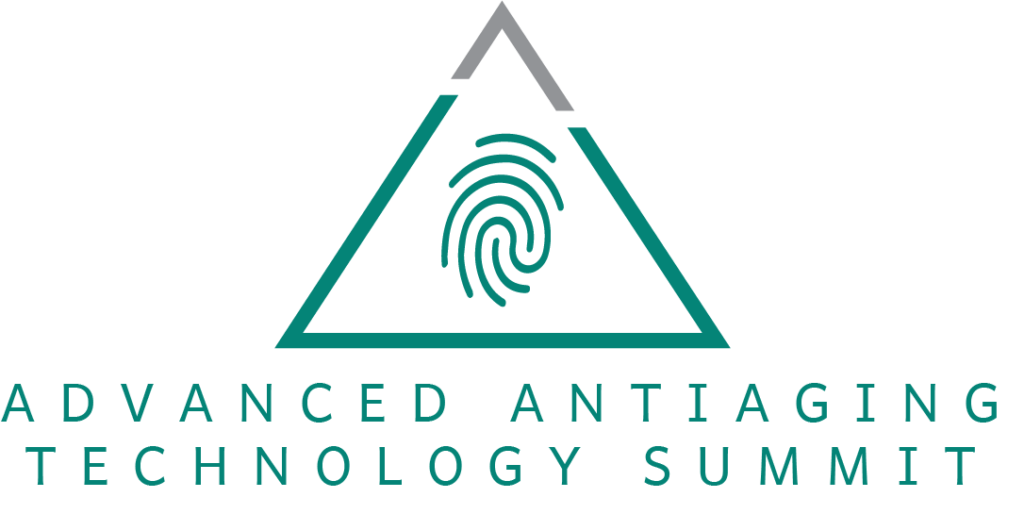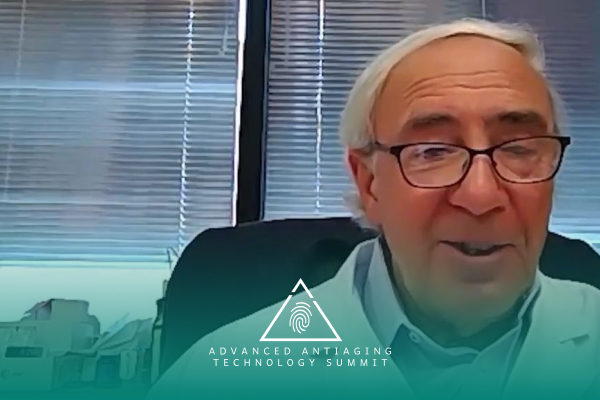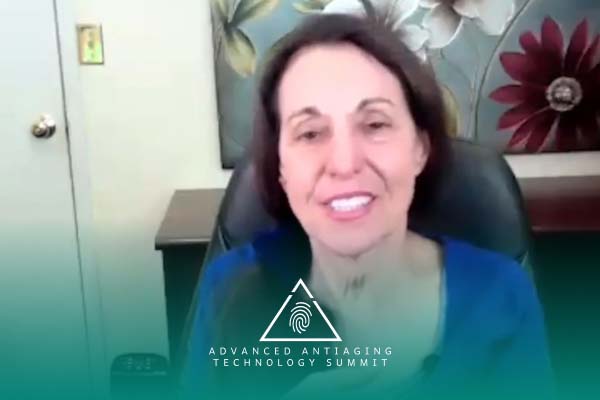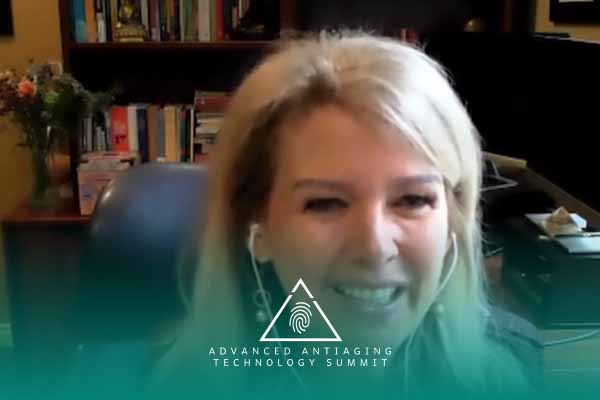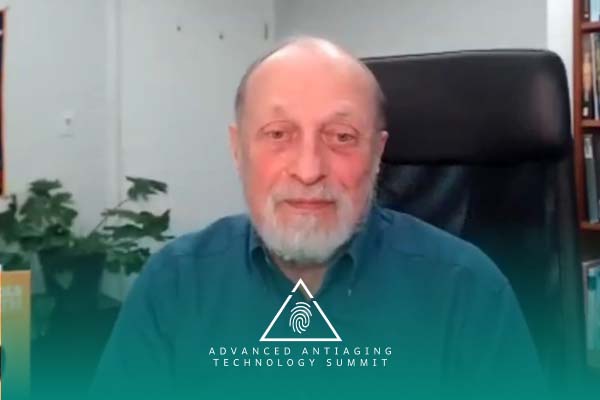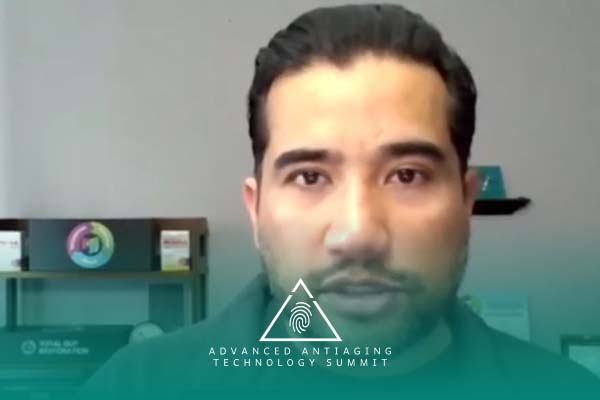Join the discussion below

Dr. Goel is a medical physician and founder of Peak Human Labs. His mission is to speak knowledge of the latest cutting edge medical tools and science in order more people to live in a Peak mental, physical and spiritual state. You can learn more about his work at longevity.peakhuman.ca. Read More
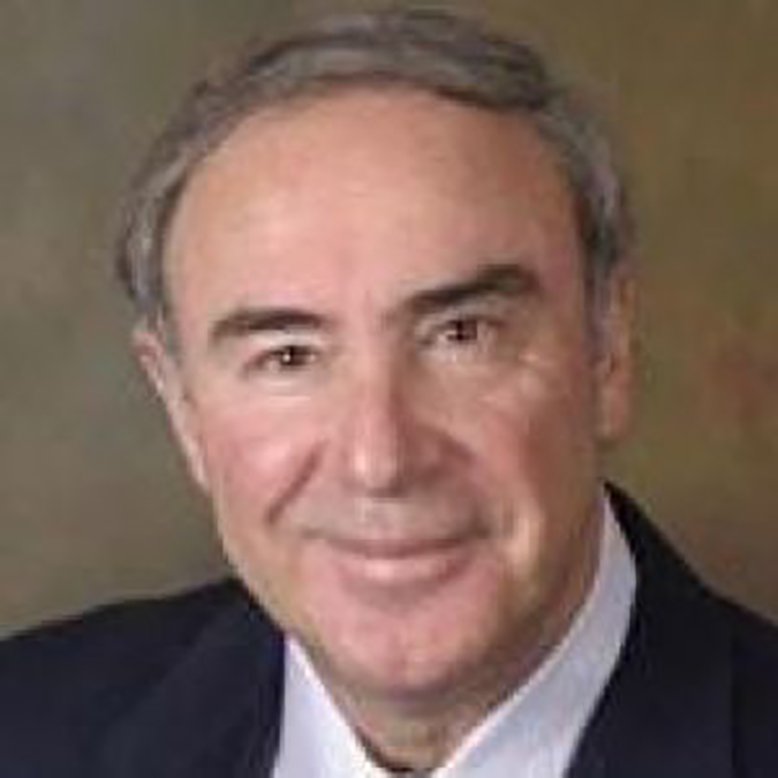
Dr. Kiprov has worked in the field of Therapeutic Apheresis for more than 30 years and has published extensively on this subject. Dr. Kiprov served two terms on the American Society for Apheresis (ASFA) Board of Directors and created the first ASFA educational video program. He is also the first physician to... Read More
Dr. Dobri Kiprov’s Expertise: Dr. Dobri Kiprov, a pioneer in therapeutic apheresis, discusses his journey from immunology to innovative anti-aging therapies, emphasizing the importance of treating autoimmune diseases and preventing them.
Alzheimer’s and Plasma Exchange: Dr. Kiprov highlights the groundbreaking potential of therapeutic plasma exchange in addressing Alzheimer’s disease, sharing insights from a landmark study showing promising results in slowing down or preventing the progression of this age-related condition.
Challenges and Future of Plasmapheresis: Dr. Kiprov underscores the need for controlled clinical trials to expand the reach of plasmapheresis as a preventive measure against various age-related diseases. He discusses the challenges and the vision of making this treatment accessible to a broader population.
Related Topics
Aging, Aging Markers, Albumin, Alzheimers, Alzheimers Patients, Alzheimers Reversal, Anti-aging Interventions, Autoimmune Diseases, Balance, Blood Bank, Brain Health, Chronic Disease, Chronic Illness, Circulation, Diet, Exercise, Fresh Frozen Plasma, Immuno-modulator, Immunologist, Lifestyle Emotion, Logistic Issues, Magic Bullet, Organ Function, Parabiosis, Plasma Exchange, Plasmapheresis, Proteins, Proteomics, Radical Particles, Recalibration, Research, Reset, Therapeutic Apheresis, Toxic Substances, Translational Model, Young Blood, YouthfulnessSanjeev Goel, MD, FCFP (PC), CAFCI
Hi everyone, I’m Dr. Sanjeev Goel and you’re listening to the Advanced Anti-aging and Technology summit. Today I’m really excited to be talking with Dr. Dobri Kiprov. Dr. Dobri Kiprov has worked in the field of therapeutic apheresis for more than 30 years and has published extensively on this subject. Dr. Kiprov has served two terms on the American Society for Apheresis Board of Directors and create the first ASFA educational video program. He’s also the first physician to take and pass the hemapheresis practitioner exam. He is the recipient of the ASF Presidential Award for his pioneering work and numerous contributions to the field of Apheresis and the society. He is also recipient of the ASFA Lecturers Award and the Francis Morrison Memorial Award. I’m sure you’re gonna enjoy today’s talk with Dr. Kiprov as we talk all about apheresis and its effect on aging. How are you Dr. Kiprov?
Dobri Kiprov, M.D., H.P. (ASCP)
Pretty good, nice to be here, thank you.
Sanjeev Goel, MD, FCFP (PC), CAFCI
Thank you so much for your time today. I wanted to first begin by just getting some background about how you entered this whole field of looking at… And you know, very innovative therapies for aging. So if you could maybe just take us a little bit into your background of how you got into this type of science and what drew you to it?
Dobri Kiprov, M.D., H.P. (ASCP)
I’m trained as an immunologist and therapeutic apheresis specialist actually. I’ve been dealing with immunology and therapeutic apheresis for the last 30 years exclusively. So this is important in terms of the anti-aging interventions, because we treat a variety of autoimmune diseases, over 100 autoimmune diseases. The majority of those are very serious conditions. We treat them in hospitals, in ICU setting. Some are deadly. So we are able to help people with this intervention who are very, very sick. But it occurred to me that they really don’t have to wait to get that sick to be healthy because to get to the point that we need to treat them. So I believe about 20 years ago I developed a program called Lifestyle Emotion which basically uses conventional approaches to anti-aging and health as well.
So this is diet and exercise so far. So with this program, I made some progress and I was always thinking of how to get plasmapheresis into these because plasmapheresis is a very strong immuno-modulator and all these diseases that we treat are basically a failure of the immune system to function properly. In 2005, I came across the brilliant article by a husband and wife, Irene and Michael Conboy published in nature, where they used experimental parabiosis to show that it is possible to to eave towards the aging process, using the connection of the circulation of two identical animals. So I started working on a translational model. And as you well know, it’s very difficult to translate an animal model into human.
I wrote a hypothesis, I believe about 10 or nine years ago of how to do that. And I think the Conboy read my article and we got together and we discuss what we can do. And they accepted my proposal to start doing experiments with therapeutic plasma exchange, because as you well know parabiosis is impossible in humans. So we started doing that. And in addition to that, what they did is they created a small apheresis machine to do that in animals as well. So we were able to show that plasmapheresis per se, with albumin can accomplish exactly the same results as they have seen with the parabiosis in mice. And we were able to also demonstrate almost exactly the same thing in humans.
Sanjeev Goel, MD, FCFP (PC), CAFCI
Right, so maybe just for the viewer to just understand here. So the parabiosis experiment was two mice, young and old connected to each other. Their blood systems were connected. And I believe the old mouse became young, right? Is that correct?
Dobri Kiprov, M.D., H.P. (ASCP)
They are switched together, the skin of the animals, this way the circulation becomes one. And yes, the young animal became old and the old animal became young.
Sanjeev Goel, MD, FCFP (PC), CAFCI
Right, and then you were saying that, what you’re saying with plasmapheresis is about taking out the plasma and replacing with albumin. Is that a fair way to describe that
procedure?
Dobri Kiprov, M.D., H.P. (ASCP)
That’s correct.
Sanjeev Goel, MD, FCFP (PC), CAFCI
Right, and so none of this using young blood or anything like that? Is the reason why that hasn’t been done because it wasn’t gonna work? Or why did you make that protocol change from that experiment of the actual mouse young blood to the older mouse’s blood? Like where there was mixing of actual blood.
Dobri Kiprov, M.D., H.P. (ASCP)
The initial experiment of the Conboys suggested that there may be something to do with young blood. I don’t think that they believe this, the two of them, and I think that a lot of people just assumed and a little bring excuse to what’s happening. We’ve be looking for our young bloods for the last 15 centuries and all of a sudden it’s here. Everything is okay. So I discussed this approach with some of the top leading scientists in the field early after their publication. And they suggested that we do plasmapheresis with FFP, with fresh frozen plasma taken from young people.
And I didn’t dispute the notion at the time but I was very much against it because people who have experience with therapeutic plasma exchange know that if you use plasma as the replacement fluid your side effects go exponentially higher. So every person who gets plasma will have some sort of side effect. Some are mild, some are serious, some are death. So I was very much opposed to that because usually, the people that come and ask to be younger, their health, for the most part, they are healthy people. And to expose them to something that may be deadly was very much against what I do as a physician.
So for me this was out of the question. There are other logistic issues that they didn’t take under consideration because most of these people have no idea about blood bank and plasmapheresis and so forth. And just imagined how you can recruit only 15, 17, 18 year old kids to donate and how much plasma can you get? So logistically, plus this is regulated by the blood banking community, which is very, very difficult and bureaucratic rightfully so. So I was very much against that idea. And I proposed and published that the idea is to replace with albumin because albumin is the majority of the plasma.
So maybe something in the albumin, who knows? But later on we really proved that this idea that we’re infusing something that contributes to the transformation towards a young mouse or human, is wrong. And as I said, the Conboys designed this little gadget that basically transfuses bloods only blood without common circulation. It diffuses blood from one animal to another without the… So if you took all blood, all blood and infuse it in a young animal, not through . Then the young animal becomes old. If you take blood from a younger animal and infuse it into an old animal, now they happens.
Sanjeev Goel, MD, FCFP (PC), CAFCI
Interesting, okay.
Dobri Kiprov, M.D., H.P. (ASCP)
In addition to that, I think that this idea of looking for a magic bullet in plasma or blood took very serious turns and raised millions of dollars in different companies. As you might’ve heard that Griffons conducted a study in Alzheimer’s disease with young plasma and of course nothing happened. There was no result and other experiments failed as well. And in the meantime, while this craziness has been going on a lot of people have gotten injured. And I know some of them personally and some have actually died. So the idea of infusing blood into other people is not a good one. And we and others have proven that it really has nothing to do with aging.
Sanjeev Goel, MD, FCFP (PC), CAFCI
It doesn’t work. So it sounds like there’s something about the older blood or as people get older, something that then I guess causes some marker for aging or contribution aging process. It sounds like that’s the actual issue. And so by removing it through plasmapheresis makes the difference. Is that the right interpretation?
Dobri Kiprov, M.D., H.P. (ASCP)
Yeah, exactly. The Conboys here have shown that the illusion of old plasma leads to rejuvenation and as we have already published and there are many other articles coming up this year, we have identified the different proteins that contribute to the aging process, because it is basically a balance between between toxic substances and substances that produce during the metabolism of different proteins. And as we age, these balance is interrupted in one way or another. And some of the radical particles that accumulate with the aging can slow the whole process and basically impair the systemic miller.
It impairs the Miller where cells proliferate and grow and function. And because of that, a lot of the organs, and probably every organ in the system ages and does not function as well as it did when you were 20. At the same time proteins that contributes to the regulation of the whole process and the growth of certain tissues is inadequate. There isn’t enough of that. So there is a growing number of bad stuff and diminishing number of good stuff. So it’s basically the balance is impaired. And what this procedure does, it recalculates the whole system. So similarly, if your computer does not function properly and your apps are not working, if you turn it off, wait 17 seconds and turn it on again, boom, they come back. So it appears that what we do both in animals and in humans is does these recalibration.
Sanjeev Goel, MD, FCFP (PC), CAFCI
This reset that you’re talking about, is this reset back to the start or just a reset back? Like a certain time period, like of the health of this youthfulness of this plasma. Like what is the research going on that? Like how much of a reset happens?
Dobri Kiprov, M.D., H.P. (ASCP)
A lot of reset happens. And the paper that we published last year shows very much the proteomics of this whole process. But we have new data that is coming out later this year maybe even next month that actually shows this process. Now how much exactly is difficult to say because we have not run proper controls. So the proper controls would be to take young people between 16 and 20, let’s say something like that and compare with what we find here. We have not done this yet.
Sanjeev Goel, MD, FCFP (PC), CAFCI
So I understand there was a landmark study looking at Alzheimer’s patients with a plasma exchange that showed pretty big benefit. Do you wanna just talk about that? I think you were involved in that study.
Dobri Kiprov, M.D., H.P. (ASCP)
Yeah, I think that ones these experiments that we just discussed were out there and published, people said, “Well, so what? Big deal.” And the answer to that could come only from clinical trials in certain age-related diseases, age-related conditions. And there isn’t any more age related conditions than Alzheimer disease. So Griffon’s sponsored very generously a study today actually, could not as a company benefit that much of it. Which most studies that are that expensive are usually usually sponsored by a company that will benefit from the results. And generously Griffon’s didn’t do that.
They sponsored the study because they wanted to help people with Alzheimer’s disease. And their original idea was that they will use albumin and he had that manufacturer of the albumin but people can buy albumin from anybody else not just from them. So they thought that albumin has this capacity to bind different proteins. And by infusing large quantities of albumin and using plasma exchange, you can infuse enough albumin so its receptors will bind that amyloid. And by removing back the amyloid, which is the main prevailing hypothesis for Alzheimer’s disease pathophysiology, you would arrest the progression of the disease.
And while this is correct, albumin is a very, very strong antioxidant. And also can bind a variety of proteins. We know now that without the actual plasma exchange the study would not have given the results it did. So basically the results were very encouraging. There were two groups of patients. So one group was moderately severe disease and the other group was mild. And in the moderately severe disease we were able to arrest the progression of the disease in 67% of the patients. And in the mild disease, in 100% of the patients, which is very impressive because it means that we may be able to actually prevent the disease if we intervene early. Certainly progression of the disease. So this was originally published and there is a new article that talks about the actual improvement of the patients, both neuropsychologically and otherwise during the treatment. And I cannot discuss that because not published yet but it’s very encouraging.
Dobri Kiprov, M.D., H.P. (ASCP)
Yeah, I think that ones these experiments that we just discussed were out there and
Sanjeev Goel, MD, FCFP (PC), CAFCI
Oh, wow, okay. And is there some characteristics of those patients let’s say, for example that make them a better candidate to have a better result? Like was there any genetic factors or, you know, ethnicity I’m not sure if any other factors that could make one a better candidate.
Dobri Kiprov, M.D., H.P. (ASCP)
Right, to start with, I would say that we really didn’t look into this in this particular study. I think that you’re right. There are different people with different predispositions to a variety of diseases, including Alzheimer’s disease. There is, if we can call it a genetic variant which fortunately, it’s very rare. We did not concentrate on that. At the moment I’m treating patients with these form of the disease because our study shows that we may be able to stop the progression of the disease.
These people have an abnormality that makes the liver production of amyloid constant. So they constantly produce these things. And many of them get the disease much earlier than conventional Alzheimer. So conventional Alzheimer’s is in older people, 80, 90. These people are in their 30s, 40s, 50s, and some die, very young. They die in their 50. So if we can kind of raise the disease in these patients will be great. And we started this study recently. We don’t know the answer yet. Obviously it will take some time. In terms of ethnicity, we didn’t look into this and I don’t know the answer.
Sanjeev Goel, MD, FCFP (PC), CAFCI
What about the variant variant, what impact do you think that this type of treatment would have with those types of individuals who will have that?
Dobri Kiprov, M.D., H.P. (ASCP)
Yes, again, I don’t think that we know enough about that. I think that our new studies are aiming to figure out whether we can affect that. I think we can get deal or to the constant production of that amyloid. This is very similar. So there is a hope our initial studies provide hope but not prove.
Sanjeev Goel, MD, FCFP (PC), CAFCI
And what about, do you think that the mechanism is on reducing inflammation? ‘Cause that has been a common theme with almost every speaker that I’ve interviewed that inflammation is at the center of aging. So I do think that this type of plasmapheresis is having impact on reducing inflammatory agents in the plasma.
Dobri Kiprov, M.D., H.P. (ASCP)
Yes, definitely. Our coming paper talks extensively about this. I’m giving a talk this Sunday, but I’m going to discuss that. We’ll make it available on the internet probably within a week from Sunday so you’ll be able to pick that. But there are three main processes that affect the very, very complex biology of aging. And the bottom line is inflammation. It’s chronic inflammation, there’s no doubt.And these are combined with cellular senescence as well as immunosenescence. And all three produce, very serious chronic inflammation. And if we look at proteomics and cellular markers this is very clear that’s the case.
So addressing this issue is critical. Addressing this issue early in the disease or prior to the disease is essential. The later stage you hit it, the less chance you have of succeeding. So we try to catch people in earlier stage of developing the symptoms and the markers of aging and treat them. And interestingly enough, as we described in our paper plasmapheresis affects all these three areas.So with a single motor or medication you can not do that. Here we are able we’d work procedure to affect the whole process of aging, which is extremely complex.
Now, is this wrong, and are we not gonna move forward and rely on that? No, we continue to make progress and add other things to the plasmapheresis. We already have proprietary fluid that we use that has been shown in controlled clinical trials that works even better than the Plasmapheresis. Plasmapheresis with albumin works. But what we do works better, even better. So we will continue to develop new strategies. But at the moment plasma exchange appears to be the only proven set strategy that works.
Sanjeev Goel, MD, FCFP (PC), CAFCI
What’s your feeling about the use of exosomes add to this type of treatment? Do you think it has any value?
Dobri Kiprov, M.D., H.P. (ASCP)
It might, we don’t know. I think until it’s properly researched and proven in clinical trials, we wouldn’t know. There are many candidates not just the exosomes. There are many other candidates that may be in combination with what we do, can either shorten the number of procedures that we need to use to create an anti-aging environment or enhance what we do with the plasmapheresis. So there are many opportunities, but as you well know it takes a lot of effort, takes a lot of money to create a clinical trial that will appropriately will address these issues and be believable to other scientists and physicians.
Sanjeev Goel, MD, FCFP (PC), CAFCI
And what about the use of hyperbaric oxygen therapy? I know there’s these researchers in Israel that showed that it lengthened telomere length significantly. Do you have any thoughts about that type of treatment in conjunction with plasmapheresis?
Dobri Kiprov, M.D., H.P. (ASCP)
I have thoughts, but I don’t have experience. So when I don’t have experiences then I don’t like to comment.
Sanjeev Goel, MD, FCFP (PC), CAFCI
Sounds good, thank you. So what is the challenges right now that you foresee with plasmapheresis and what do you think is happening in the next year that you’re working on to understand more and bring this technology further?
Dobri Kiprov, M.D., H.P. (ASCP)
At the moment, we’re trying to organize a controlled clinical trial to show that we can affect not only Alzheimer’s disease, but other age-related conditions. I think that without , we cannot accomplish to reach the respect that we need to reach in the medical community and the scientific community. So we need to continue to fight for funding, for controlled clinical trials. And I think this is the crux of the matter because right now the treatment is expensive.
It can be afforded only by a wealthy individuals. And my idea is to bring these to everybody who needs it and eventually to use it as a preventive measure. So if we don’t reach the stages of diseases that we have to really treat very intensely with a variety of dangerous medications and so forth. So if we can convince the insurance companies that investing in a preventative measure such as plasmapheresis at a given stage of human age can prevent diseases such as, cancer, infections, Alzheimer’s and so forth. That will be a tremendous accomplishment. And in order to do that, again, we need placebo controlled clinical trials.
Sanjeev Goel, MD, FCFP (PC), CAFCI
Okay, thank you. That’s amazing. I really thank you for your time today. I think our viewers really learned a lot and it’s a pretty exciting time right now. So I thank you for being a leader and taking this whole science forward.
Dobri Kiprov, M.D., H.P. (ASCP)
My pleasure.
Downloads
